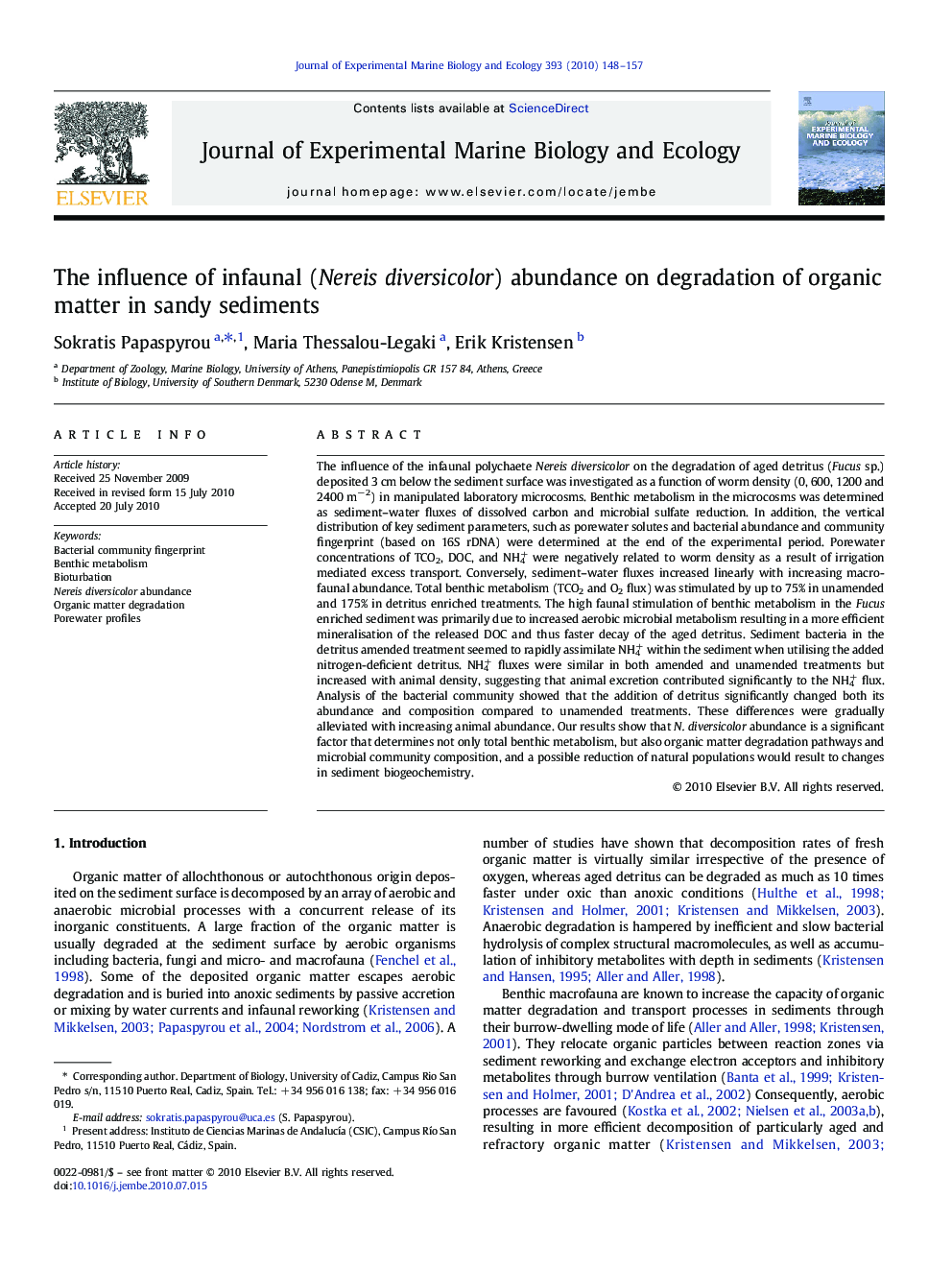| کد مقاله | کد نشریه | سال انتشار | مقاله انگلیسی | نسخه تمام متن |
|---|---|---|---|---|
| 4396470 | 1618467 | 2010 | 10 صفحه PDF | دانلود رایگان |
عنوان انگلیسی مقاله ISI
The influence of infaunal (Nereis diversicolor) abundance on degradation of organic matter in sandy sediments
دانلود مقاله + سفارش ترجمه
دانلود مقاله ISI انگلیسی
رایگان برای ایرانیان
کلمات کلیدی
موضوعات مرتبط
علوم زیستی و بیوفناوری
علوم کشاورزی و بیولوژیک
علوم آبزیان
پیش نمایش صفحه اول مقاله

چکیده انگلیسی
The influence of the infaunal polychaete Nereis diversicolor on the degradation of aged detritus (Fucus sp.) deposited 3 cm below the sediment surface was investigated as a function of worm density (0, 600, 1200 and 2400 mâ 2) in manipulated laboratory microcosms. Benthic metabolism in the microcosms was determined as sediment-water fluxes of dissolved carbon and microbial sulfate reduction. In addition, the vertical distribution of key sediment parameters, such as porewater solutes and bacterial abundance and community fingerprint (based on 16S rDNA) were determined at the end of the experimental period. Porewater concentrations of TCO2, DOC, and NH4+ were negatively related to worm density as a result of irrigation mediated excess transport. Conversely, sediment-water fluxes increased linearly with increasing macrofaunal abundance. Total benthic metabolism (TCO2 and O2 flux) was stimulated by up to 75% in unamended and 175% in detritus enriched treatments. The high faunal stimulation of benthic metabolism in the Fucus enriched sediment was primarily due to increased aerobic microbial metabolism resulting in a more efficient mineralisation of the released DOC and thus faster decay of the aged detritus. Sediment bacteria in the detritus amended treatment seemed to rapidly assimilate NH4+ within the sediment when utilising the added nitrogen-deficient detritus. NH4+ fluxes were similar in both amended and unamended treatments but increased with animal density, suggesting that animal excretion contributed significantly to the NH4+ flux. Analysis of the bacterial community showed that the addition of detritus significantly changed both its abundance and composition compared to unamended treatments. These differences were gradually alleviated with increasing animal abundance. Our results show that N. diversicolor abundance is a significant factor that determines not only total benthic metabolism, but also organic matter degradation pathways and microbial community composition, and a possible reduction of natural populations would result to changes in sediment biogeochemistry.
ناشر
Database: Elsevier - ScienceDirect (ساینس دایرکت)
Journal: Journal of Experimental Marine Biology and Ecology - Volume 393, Issues 1â2, 30 September 2010, Pages 148-157
Journal: Journal of Experimental Marine Biology and Ecology - Volume 393, Issues 1â2, 30 September 2010, Pages 148-157
نویسندگان
Sokratis Papaspyrou, Maria Thessalou-Legaki, Erik Kristensen,